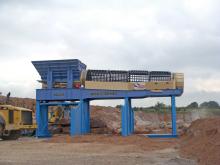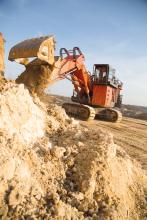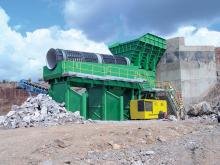
Overburden can be useful when it comes to landscaping areas around the quarry but what can be done when supply outweighs that demand
Very few quarries are fortunate enough to have no overburden to strip to access aggregate reserve and most have to factor in the cost of stripping and storing material. But the cost of this process can be more than financial - some quarries have an excess of 'waste' material stockpiled that is blocking access to prime aggregates.
Many quarries utilise overburden for environmental screening or for profiling exhausted areas of the quarry, which saves importing additional material. However, in a great number of sites the volume of overburden far outweighs the amount needed on site or is too poor for reuse.
"In some cases this leads to quarries stockpiling years worth of overburden and ignoring the growing problem," said
"Reprocessing stockpiled overburden material gives the opportunity to make the most of all available reserves and many quarries could benefit from this approach. The benefits do depend on the regional demand for material and whether a market is available but a lot of quarries are not even assessing the situation. Dumping the material within the quarry is too often accepted as the only option." Stelex worked with its customer to specify a mobile Hercules trommel to help tackle its stockpiles of clay-rich overburden and contaminated limestone. "There was nothing that special about the screen itself - it was a standard HT182M - except the barrel set-up which needed to be carefully adjusted to minimise the potential for binding in wet weather due to the high clay content," said Fletcher.
Using the machine, the quarry was recovering around 65% limestone per tonne processed which was sold as gabion material and opened up a new market. Processing of the clay-rich material meant that it was more useable on site for landscaping.
"We offered the machine to the customer on a rental basis so the risk was low," explained Fletcher. "Using a trommel in this way means that any clay-rich material could be diverted away from the main plant, increasing capacity in that area too.
"Stockpiled overburden varies but for many quarries it could present a hidden reserve, which we think more quarries will start to investigate once aggregate demand levels rise again."








